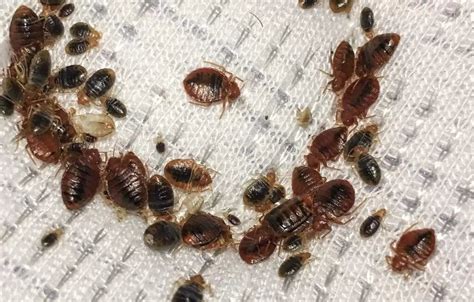Bed bugs are a nightmare for homeowners and travelers alike. These tiny, blood-sucking insects can infest your home, causing sleepless nights, itchy bites, and a general sense of unease. But don’t despair! With the right knowledge and strategies, you can bid farewell to bed bugs once and for all.

Understanding the Enemy: Bed Bugs 101
- Size and Appearance: Adult bed bugs are about the size of an apple seed, flat, and reddish-brown in color. They have six legs and antennae.
- Life Cycle: Bed bugs go through a series of molts before reaching adulthood. The entire life cycle can take anywhere from two to six months.
- Feeding Habits: Bed bugs feed on human blood, typically at night. They inject an anesthetic and anticoagulant into their victims, allowing them to feed unnoticed.
- Hiding Places: Bed bugs often hide in cracks and crevices around beds, furniture, baseboards, and luggage.
Bye Bye Bed Bugs: Effective Strategies
1. Inspection and Identification
The first step in eliminating bed bugs is to identify their presence. Look for signs of bites, blood stains on sheets, and small, dark specks (excrement). If possible, contact a pest control professional for confirmation.
2. Physical Removal
- Vacuum Thoroughly: Vacuum all areas where bed bugs are likely to hide, including beds, furniture, and carpets. Dispose of the vacuum bag immediately.
- Steam Cleaning: Use a steam cleaner to kill bed bugs and their eggs on mattresses, box springs, and furniture.
- Wash and Dry: Wash all bedding, clothing, and curtains in hot water and dry them on the highest heat setting.
3. Chemical Treatment
In cases of severe infestation, chemical treatment may be necessary. Hire a licensed pest control company to apply insecticides or heat treatments to the affected areas.
4. Bed Bug Interceptors
Bed bug interceptors are small traps that can be placed under bed legs to trap and monitor bed bugs. They are an effective way to detect an infestation early on and prevent the spread of bed bugs.
5. Prevention
Once you have eliminated bed bugs, it is essential to prevent re-infestation. Follow these tips:
- Inspect Luggage: Thoroughly inspect your luggage after traveling.
- Be Cautious of Used Furniture: Avoid bringing used furniture into your home without thoroughly inspecting it for bed bugs.
- Seal Cracks and Crevices: Seal any cracks or crevices around beds, furniture, and baseboards to prevent bed bugs from entering.
- Clean Regularly: Vacuum and wash bedding regularly to remove potential hiding places for bed bugs.
Pain Points and Motivations of Bed Bug Sufferers
- Sleep Disturbances: Bed bug bites can cause sleepless nights, leading to irritability, fatigue, and decreased productivity.
- Skin Irritations: Bites can cause itchy, red bumps that can develop into secondary infections.
- Emotional Distress: Living with bed bugs can cause feelings of anxiety, embarrassment, and isolation.
- Property Value Reduction: A bed bug infestation can significantly reduce the value of your home or property.
The Importance of a Comprehensive Approach
Eliminating bed bugs requires a comprehensive approach that addresses all aspects of the infestation. By combining physical removal, chemical treatment, prevention strategies, and attention to the emotional needs of bed bug sufferers, you can effectively eradicate these pests and restore peace of mind to your home.
- National Pest Management Association (NPMA)
- Centers for Disease Control and Prevention (CDC)
- Environmental Protection Agency (EPA)
Tables
Table 1: Costs of Bed Bug Control
| Treatment Method | Cost |
|---|---|
| Vacuuming and Inspection | Free – $100 |
| Steam Cleaning | $100 – $300 |
| Insecticide Treatment | $300 – $1,000 |
| Heat Treatment | $1,000 – $2,000 |
Table 2: Bed Bug Bite Symptoms
| Symptom | Frequency |
|---|---|
| Red, itchy bumps | 70% |
| Blisters | 20% |
| Skin irritation | 10% |
Table 3: Bed Bug Hiding Places
| Location | Frequency |
|---|---|
| Mattresses and box springs | 90% |
| Bed frames | 70% |
| Headboards and footboards | 60% |
| Furniture | 50% |
| Baseboards and carpet edges | 40% |
Table 4: Bed Bug Prevention Tips
| Tip | Effectiveness |
|---|---|
| Seal cracks and crevices | 90% |
| Insect-proof luggage | 80% |
| Inspect used furniture | 70% |
| Clean regularly | 60% |
